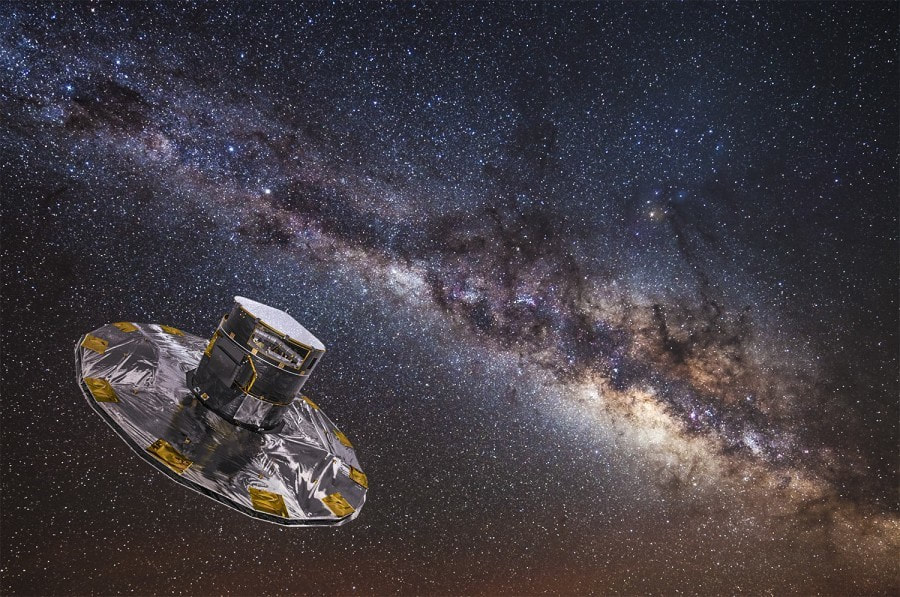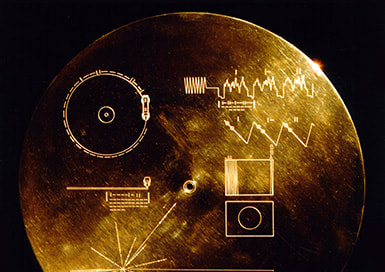I am interested in the complete “story” of exoplanets: how different kinds of planets form and evolve (possibly even evolving into something that can host life!), and how we can observe these processes.
This leads to my main interests in protoplanetary and debris disks (including our own Kuiper Belt), planet characterization with high-contrast imaging, and infrared instrumentation + polarimetry for exoplanet science. I am also interested in the intersection between exoplanets and solar system science, using what we know from our own solar system to understand distant systems (and vice versa).
This leads to my main interests in protoplanetary and debris disks (including our own Kuiper Belt), planet characterization with high-contrast imaging, and infrared instrumentation + polarimetry for exoplanet science. I am also interested in the intersection between exoplanets and solar system science, using what we know from our own solar system to understand distant systems (and vice versa).
|
Informed Searches for Substellar Companions
Searching for planets with direct imaging has proven quite difficult, since the occurrence rates are somewhat low. Now, with information on stellar accelerations from Gaia and Hipparcos, we can start looking for substellar companions in a more targeted search. I've worked with collaborators at UCSB and UCSC on an observing campaign informed by the Hipparcos-Gaia Catalog of Accelerations (HGCA) using Keck NIRC2 and Subaru SCExAO/CHARIS looking for new substellar companions to characterize. |
Lewis, Briley L., Li, Yiting, et al. “Surveying nearby brown dwarfs with HGCA II: Spectroscopic characterization of faint, high-mass brown dwarf HD 176535 B.'' In prep for submission to MNRAS. [Expected Winter 2024]
Li, Yiting et al. (incl. Lewis, Briley L.). “The Keck-HGCA Accelerating Stars Pilot Survey II: Direct Imaging Discovery of HD 63754 B, a ∼20au Massive Companion Near the Hydrogen Burning Limit.” In prep for submission to Monthly Notices of the Royal Astronomical Society. [Expected Fall 2023]
Li, Yiting, Brandt, Timothy, D. et al. (incl. Lewis, Briley L.). "Surveying nearby brown dwarfs with HGCA: direct imaging discovery of a faint, high-mass brown dwarf orbiting HD 176535 A." Monthly Notices of the Royal Astronomical Society 522.4 (2023): 5622-5637. https://academic.oup.com/mnras/article/522/4/5622/7152615
Li, Yiting et al. (incl. Lewis, Briley L.). “The Keck-HGCA Accelerating Stars Pilot Survey II: Direct Imaging Discovery of HD 63754 B, a ∼20au Massive Companion Near the Hydrogen Burning Limit.” In prep for submission to Monthly Notices of the Royal Astronomical Society. [Expected Fall 2023]
Li, Yiting, Brandt, Timothy, D. et al. (incl. Lewis, Briley L.). "Surveying nearby brown dwarfs with HGCA: direct imaging discovery of a faint, high-mass brown dwarf orbiting HD 176535 A." Monthly Notices of the Royal Astronomical Society 522.4 (2023): 5622-5637. https://academic.oup.com/mnras/article/522/4/5622/7152615
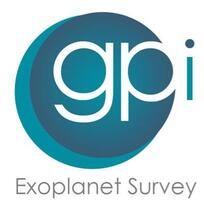
Debris Disks & The Gemini Planet Imager
As a grad student at UCLA in Prof. Mike Fitzgerald's group, I've worked as part of the Gemini Planet Imager collaboration, focused on analyzing and modeling debris disks observed with the survey. Debris disks are the remnants of colliding protoplanets, providing an opportunity for us to investigate the building blocks of planet formation. So far, I've focused on looking at disks in polarized light to learn more about their composition using both GPI and Subaru's SCExAO/CHARIS.
As a grad student at UCLA in Prof. Mike Fitzgerald's group, I've worked as part of the Gemini Planet Imager collaboration, focused on analyzing and modeling debris disks observed with the survey. Debris disks are the remnants of colliding protoplanets, providing an opportunity for us to investigate the building blocks of planet formation. So far, I've focused on looking at disks in polarized light to learn more about their composition using both GPI and Subaru's SCExAO/CHARIS.
Lewis, Briley L., Fitzgerald, Michael P., et al. “Gemini Planet Imager Observations of a Resolved Low-Inclination Debris Disk Around HD 156623." In prep for submission to The Astrophysical Journal. [Expected Fall 2023]
Chen, Minghan, Brandt, Timothy D., et al. (incl. Lewis, Briley L.). “Multiband polarimetric imaging of HD 34700 with SCExAO/CHARIS.” In prep for submission to Monthly Notices of the Royal Astronomical Society. [Expected Fall 2023]
Lopez, Ronald, Fitzgerald, Michael P., et al. (incl. Lewis, Briley L.). “The peculiar warp of HD 110058's debris disk with the Gemini Planet Imager.” In prep for submission to The Astrophysical Journal. [Expected Fall 2023]
Hom, Justin, et al. (incl. Lewis, Briley L.). “A Uniform Analysis of Debris Disks with the Gemini Planet Imager II: An Investigation of Disk Properties with Radiative Transfer Forward Modeling.” In Review, Submitted to Monthly Notices of the Royal Astronomical Society.
Crotts, Katie, et al. (incl. Lewis, Briley L.). “A Uniform Analysis of Debris Disks with the Gemini Planet Imager I: An Empirical Search for Perturbations from Planetary Companions in Polarized Light Images.” In Review, Submitted to The Astrophysical Journal.
Chen, Minghan, Brandt, Timothy D., et al. (incl. Lewis, Briley L.). “Multiband polarimetric imaging of HD 34700 with SCExAO/CHARIS.” In prep for submission to Monthly Notices of the Royal Astronomical Society. [Expected Fall 2023]
Lopez, Ronald, Fitzgerald, Michael P., et al. (incl. Lewis, Briley L.). “The peculiar warp of HD 110058's debris disk with the Gemini Planet Imager.” In prep for submission to The Astrophysical Journal. [Expected Fall 2023]
Hom, Justin, et al. (incl. Lewis, Briley L.). “A Uniform Analysis of Debris Disks with the Gemini Planet Imager II: An Investigation of Disk Properties with Radiative Transfer Forward Modeling.” In Review, Submitted to Monthly Notices of the Royal Astronomical Society.
Crotts, Katie, et al. (incl. Lewis, Briley L.). “A Uniform Analysis of Debris Disks with the Gemini Planet Imager I: An Empirical Search for Perturbations from Planetary Companions in Polarized Light Images.” In Review, Submitted to The Astrophysical Journal.
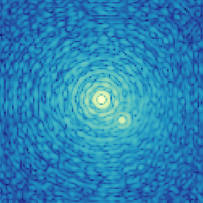
Data Processing & Speckle Statistics in High Contrast Imaging
For my first few years of grad school, I worked with Prof. Mike Fitzgerald and collaborators at UCSB on a new data-processing algorithm to remove speckle noise (using both spatial *and* temporal information) from high-contrast imaging data, with the goal of using this tool to find fainter exoplanets. To reach the goals set forth by the 2020 Decadal Survey, improving instrumentation and data processing like this will be a key task.
For my first few years of grad school, I worked with Prof. Mike Fitzgerald and collaborators at UCSB on a new data-processing algorithm to remove speckle noise (using both spatial *and* temporal information) from high-contrast imaging data, with the goal of using this tool to find fainter exoplanets. To reach the goals set forth by the 2020 Decadal Survey, improving instrumentation and data processing like this will be a key task.
Lewis, Briley L., Fitzgerald, Michael P., et al. "Speckle Space–Time Covariance in High-contrast Imaging." The Astronomical Journal 165.2 (2023): 59. https://iopscience.iop.org/article/10.3847/1538-3881/aca761/pdf
Dodkins, Rupert H., Davis, Kristina K., Lewis, Briley L., et al. "First Principle Simulator of a Stochastically Varying Image Plane for Photon-counting High Contrast Applications." Publications of the Astronomical Society of the Pacific 132.1016 (2020): 104503. https://iopscience.iop.org/article/10.1088/1538-3873/aba9e4/pdf
Dodkins, Rupert H., Davis, Kristina K., Lewis, Briley L., et al. "First Principle Simulator of a Stochastically Varying Image Plane for Photon-counting High Contrast Applications." Publications of the Astronomical Society of the Pacific 132.1016 (2020): 104503. https://iopscience.iop.org/article/10.1088/1538-3873/aba9e4/pdf
Margot, Jean-Luc, et al. (incl. Lewis, Briley L.). “A Search for Technosignatures Around 31 Sun-like Stars with the Green Bank Telescope at 1.15–1.73 GHz.” Astronomical Journal (2020): 161 55. https://iopscience.iop.org/article/10.3847/1538-3881/abcc77/meta
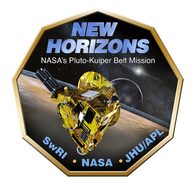
New Horizons: NASA's Pluto-Kuiper Belt Mission
Starting as a part of STScI's Summer 2017 student program, I worked with data from the New Horizons mission to better understand nitrogen - the dominant component of Pluto's surface and atmosphere - and the factors that influence its transport across the surface, through an analysis of the LEISA infrared hyperspectral data and related composition maps, as well as volatile transport modeling. My initial presentation for the summer program can be viewed on STScI's archive.
Starting as a part of STScI's Summer 2017 student program, I worked with data from the New Horizons mission to better understand nitrogen - the dominant component of Pluto's surface and atmosphere - and the factors that influence its transport across the surface, through an analysis of the LEISA infrared hyperspectral data and related composition maps, as well as volatile transport modeling. My initial presentation for the summer program can be viewed on STScI's archive.
Lewis, Briley L., et al. "Distribution and energy balance of Pluto’s nitrogen ice, as seen by New Horizons in 2015." Icarus 356 (2021): 113633. https://www.sciencedirect.com/science/article/pii/S0019103519305822
Lisse, Carey, Young, Leslie A., et al. (incl. Lewis, Briley L.). "A Predicted Dearth of Majority Hypervolatile Ices in Oort Cloud Comets." The Planetary Science Journal 3.5 (2022): 112. https://iopscience.iop.org/article/10.3847/PSJ/ac6097/pdf
Johnson, Perianne E., et al. (incl. Lewis, Briley L.). "Modeling Pluto’s minimum pressure: implications for haze production." Icarus 356 (2021): 114070. https://www.sciencedirect.com/science/article/pii/S0019103520304188
Lisse, Carey., et al. (incl. Lewis, Briley L.). "On the Stability of KBO 2014 MU69’s and Pluto’s Ices." Icarus (2020): 114072. https://www.sciencedirect.com/science/article/abs/pii/S0019103520304206
Lisse, Carey, Young, Leslie A., et al. (incl. Lewis, Briley L.). "A Predicted Dearth of Majority Hypervolatile Ices in Oort Cloud Comets." The Planetary Science Journal 3.5 (2022): 112. https://iopscience.iop.org/article/10.3847/PSJ/ac6097/pdf
Johnson, Perianne E., et al. (incl. Lewis, Briley L.). "Modeling Pluto’s minimum pressure: implications for haze production." Icarus 356 (2021): 114070. https://www.sciencedirect.com/science/article/pii/S0019103520304188
Lisse, Carey., et al. (incl. Lewis, Briley L.). "On the Stability of KBO 2014 MU69’s and Pluto’s Ices." Icarus (2020): 114072. https://www.sciencedirect.com/science/article/abs/pii/S0019103520304206
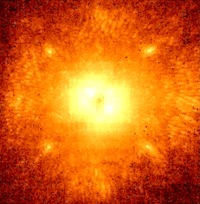
Project 1640: Toward Exploration of Other Worlds
Beginning as an REU student at the American Museum of Natural History in Summer 2016 under the supervision of Dr. Rebecca Oppenheimer, I was a part of Project 1640, a high contrast imaging instrument at Palomar Observatory in CA, used to conduct a survey of nearly 200 nearby stars to search for exoplanets and brown dwarfs. I have worked on various aspects of the survey, including selecting targets and staffing observing runs with the instrument, processing data, and spectral characterization.
Beginning as an REU student at the American Museum of Natural History in Summer 2016 under the supervision of Dr. Rebecca Oppenheimer, I was a part of Project 1640, a high contrast imaging instrument at Palomar Observatory in CA, used to conduct a survey of nearly 200 nearby stars to search for exoplanets and brown dwarfs. I have worked on various aspects of the survey, including selecting targets and staffing observing runs with the instrument, processing data, and spectral characterization.
J. Aguilar, R. Nilsson, R. Oppenheimer, B.L. Lewis, L. Pueyo, et. al. “Discovery of a New Companion Object through High-Contrast Imaging.” Submitted to ApJ.
A complete list of my publications can be found on Google Scholar or NASA ADS.
Photos courtesy of Gaia Collaboration, Gemini Planet Imager, NASA/Voyager, NASA/SWRI/New Horizons, Project 1640.
Proudly powered by Weebly
